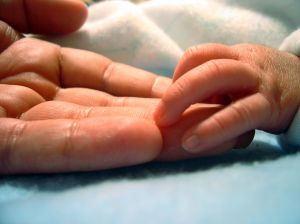A recent report released by the Victorian Auditor-General’s Office highlighted the shortcomings in the strategic planning approach to providing safe and equitable maternity care in this state. Following this report, The Age (13 October) revealed that hundreds of women have given birth on emergency room trolleys, demonstrating the lack of appropriate environments for women giving birth.
Birth numbers continue to rise, with the latest figures released by the Consultative Council of Paediatric Mortality and Morbidity showing that 72,205 babies were born in 2008 compared to a low of 62,555 in 2000. But during this period of rapidly rising birth numbers, beds have been closed and the new Royal Women’s Hospital has proved too small, leading to restrictive admission policies.
Midwifery continuity of care, where women see the same carer or small team of carers throughout their pregnancy, has been demonstrated to reduce interventions such as assisted births and episiotomies, but the resources necessary to provide this optimum care equitably are not available.
Midwives are highly skilled professionals, experts in caring for new mothers and their babies. (The World Health Organisation has identified that all women should have access to a midwife.) An identified shortage of midwives three years ago led to the implementation of a student fellowship program whereby students were paid to work in some postnatal wards to prevent the employment of untrained enrolled nurses. Those programs preserved the positions for midwives, but in at least one health authority they are no longer seen to be required.
Workforce Australia identified midwives as an ageing group of professionals and sought Commonwealth government resources for the education of more midwives. (Monash University was one of several universities in Victoria who increased student numbers.) Yet 50 per cent of all midwifery students across Victoria were unable to gain a graduate position for 2012.
Some hospitals have responded to the midwife shortage by importing from other countries and that, combined with restricted budgets, has led to a reduction in the number of places available for new graduates. The risk is that in a few years time, when the current generation of experienced midwives retires, those newly qualified midwives who did not get employment and thus experience will have moved away from Victoria or out of midwifery.
Contributing to the overload of some maternity services is not only the lack of structural planning for additional beds but the removal in recent years of existing maternity beds. Rural hospitals have been closed, leading to more women being required to travel long distances to reach a maternity unit.
Part of the rationale for closure of these beds was to reduce the risk for women giving birth where there was no immediate access to expert obstetricians. However, when women are required to travel they are at greater risk of giving birth without any suitably trained health professionals to hand.
While reducing maternity beds may appear to be a cost-effective method of reducing health spending, it increases the risk of complications for women and their babies is increased. These unexpected outcomes can have longer-term economic impacts for both the state government and families.


